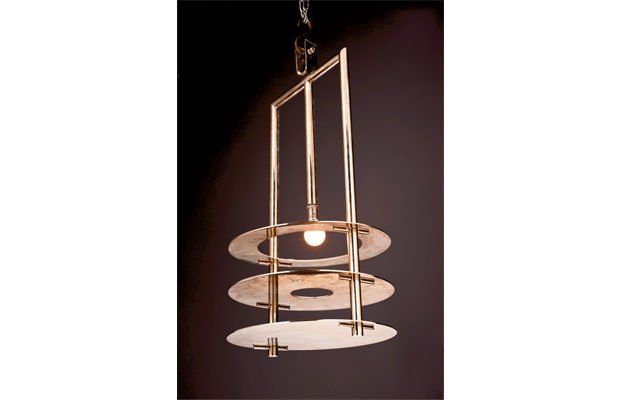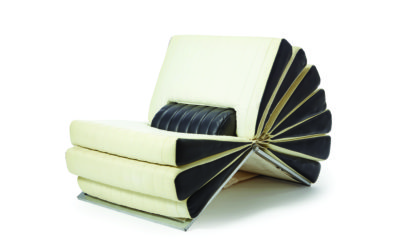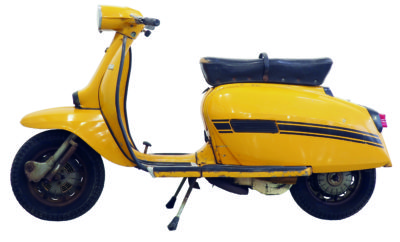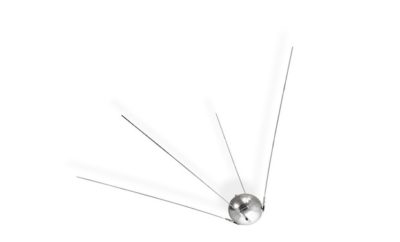
Design
René Herbst Steel Chandelier

Lot 844, Christie’s “Les Collections du Château de Gourdon” sale in Paris, March 29–31: “Suspension,” a nickel-plated tubular steel chandelier designed by René Herbst (1891–1982) in 1929. The piece sold for €139,000 (approximately $197,365) off a pre-auction estimate of €20,000 to €30,000 ($27,000 to $40,000).
Some reasons for the unexpectedly high price:
Spring Cleaning
Doubtless there will never again be an auction like this. The consignor, Laurent Negro, had amassed a collection of art deco and French modernist works that he displayed in his Château de Gourdon, a medieval castle near Grasse in the south of France. His holdings were undisputedly the largest and most complete private collection of its kind in the world, and his home became a pilgrimage destination for admirers of French modernism. With this three-day auction, Negro, who had been collecting for more than a decade, effectively returned his château to its medieval state by selling off every last trace of the twentieth century and then some. Clearly Negro inherited the collecting gene from his father, who had accumulated a trove of Old Master paintings and arms and armor that were also included in the four-part sale. Many of Negro’s favorite pieces are those designed by members of the Union des Artistes Modernes (UAM), an association of French designers that rejected the rich ornamentation and exotic costly materials employed in the work of peers such as Émile-Jacques Ruhlmann, Maurice Dufrense, and André Groult.
René Herbst and the UAM
Trained as an architect, the forward-thinking Herbst was one of the first French designers to use steel in furniture and to have his simple yet functional designs mass-produced. He played a key role, along with Pierre Chareau, Francis Jourdain, Robert Mallet-Stevens, Jan and Joël Martel, and others, in the founding of the UAM in 1929. The UAM members aimed to create a distinct style, based upon structure, a machine and speed aesthetic, and the use of new materials such as steel and concrete, leather and synthetics.
Guiding Light
This version of the “Suspension” chandelier was designed in the same year the UAM was founded and is characteristic of Herbst’s designs as well as an example of the mission of the UAM. According to Philippe Garner, international head of twentieth-century decorative arts and design at Christie’s, “though the design lent itself to series manufacture, this was a radical object with a limited, sophisticated market, and as with so many UAM works was effectively handcrafted as a prototype. Though it is totally functional, it was also conceived as a metaphor. And the messages it sends out are about the respect that Herbst and his contemporaries felt should be accorded to industrial materials and about their faith in a new visual language based on the purest of geometric forms.”
Then and Now
The estimates for this piece, which apparently was one of Negro’s first purchases, were not far from the price he had paid for it. He bought it at a Christie’s auction in May 2000 for $17,090—well within the pre-sale estimate of $15,310–$22,965. Several similar Herbst chandeliers were also sold at the Château de Gourdon auction, including two other variations of the “Suspension.” However neither of these did quite as well as lot 844. In an attempt to unlock the secret of this fixture’s appeal, Garner notes that “this one was more open, perhaps visually lighter than the others. But this is a subjective response and hardly scientific. We are looking for a clear answer in a situation where instinct and emotion are key factors, and these are hard to quantify.”
“Buyer’s Adrenaline”
According to Garner, it was most likely the context of this piece within the sale, which put a spotlight on works by members of the UAM, that was the main reason for this astounding price: “There were a number of interested parties and the low and high estimates were swiftly left behind.” Gary Calderwood, an art deco expert and co-principal of the much admired Calderwood Gallery in Philadelphia, notes that “the likelihood of someone purchasing this piece from a dealer for that kind of money is quite remote.” In other words, in his opinion enthusiasm got the better of the bidders. Ultimately, offers on the piece came down to those from two phone bidders, and sheer competition between the pair appears to be what catapulted the price to just shy of the $200,000 mark. MODERN attempted to contact the buyer, who preferred to remain anonymous.












